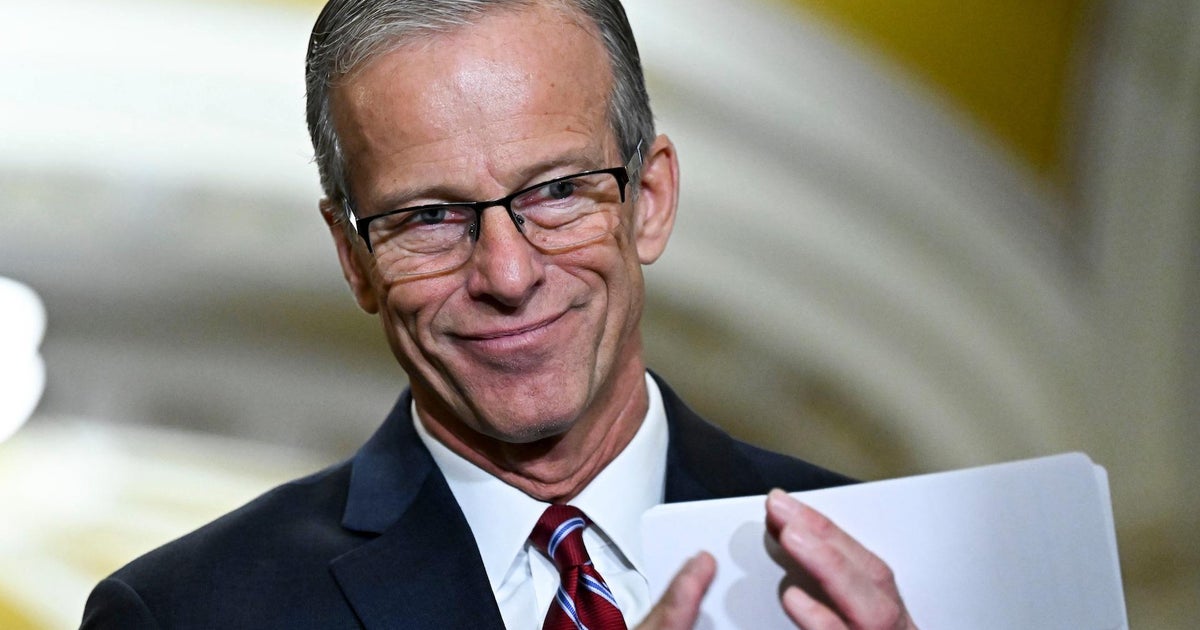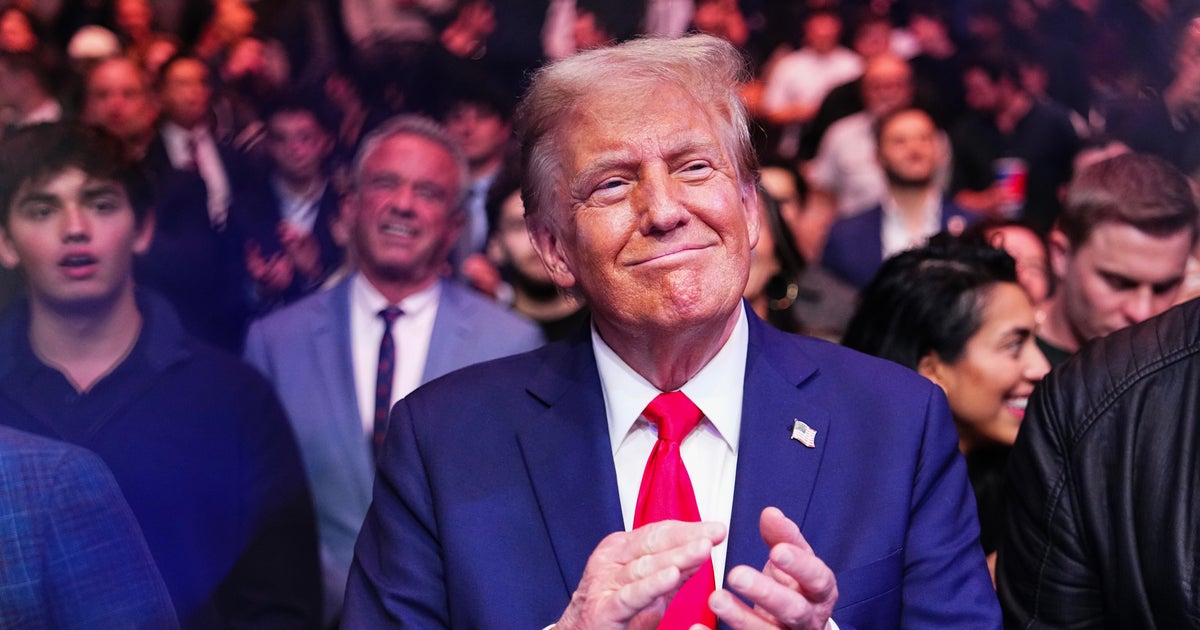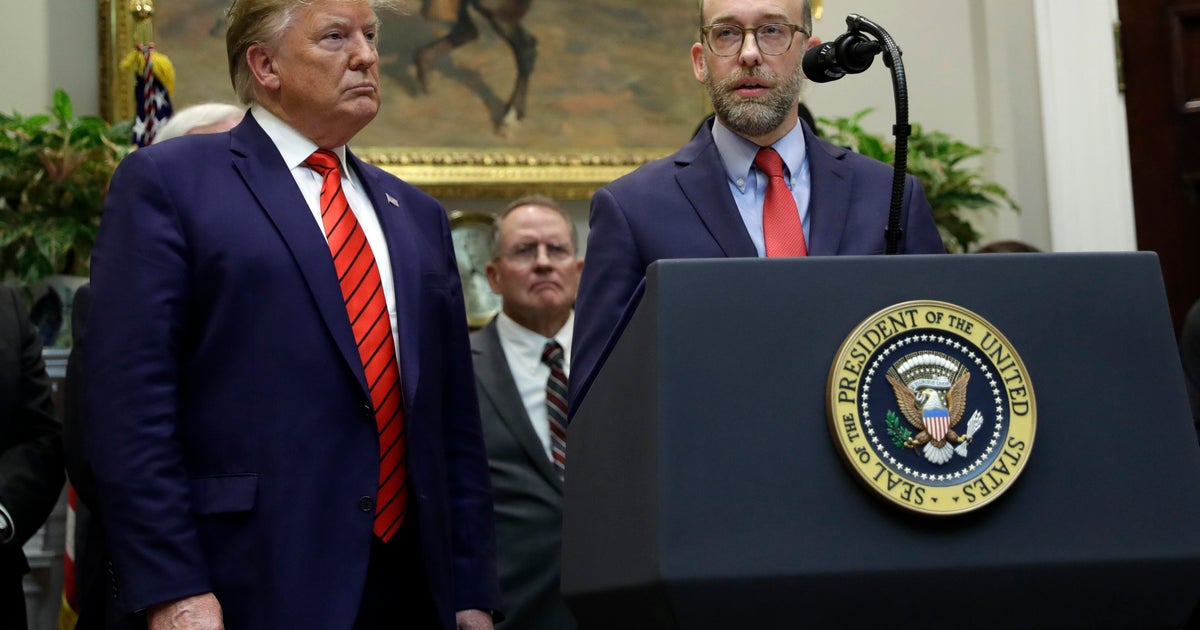"You're gonna call your own shots," Trump tells governors about guidelines to reopen states
President Trump's guidelines on reopening the country leaves much up to governors, states and businesses as they look to find ways to restart their economies amid the coronavirus pandemic, according to a copy of a White House "Opening Up America Again" document obtained by CBS News. The plan is expected to put much of the onus on states to develop sufficient testing and contact tracing systems.
The 18-page document, which resembles a detailed PowerPoint presentation, lists basic "gating" criteria a state or region should reach before beginning to send people back to work and school. Mr. Trump relayed the guidelines on a Thursday afternoon call.
"You're gonna call your own shots," Mr. Trump told governors on the call, according to an audio recording obtained by CBS News. "I've gotten to know almost all of you. Most of you I've known and some very well beforehand. You're very capable people. I think in all cases very capable people. And you're gonna be calling your shots. We'll be standing right alongside of you. And we're gonna get our country open, and get it working and our people want to get working."
At his daily press briefing Thursday evening, Mr. Trump said, "We're starting our life again. We're starting rejuvenation of our economy again," adding that, "This is a gradual process."
The president's approach to states' reopening has shifted throughout the week. On Monday, the president insisted he was the one with the power to tell states to open. "The president of the United States calls the shots," he said during a briefing in which he claimed he as president has "total" authority.
On his call with governors, Mr. Trump insisted the United States' testing is excellent, even as outside experts continue to insist the country needs a much greater testing capacity for people to feel safe going back to work. Mr. Trump on Thursday also described his own experience with the coronavirus test, as he lauded the improved self-swab testing coming online.
"I was a victim of the first test meaning I had to go through it. And I didn't like what was happening," Mr. Trump told the governors Thursday. "When they tell you, it goes up your nose and then they hang a right at your eye and it goes under your eye. And I say, 'You've gotta be kidding.' And I called it an operation, not a test. I said, 'This is operation.'"
The president has said he wants to begin to see reopenings in some states ahead of his May 1 target, but challenges remain for states and localities to reach the goal posts described by the White House in its guidelines.
A state government official who was on the call said that "the principles don't look materially different" from guidelines recommended by three distinct regional reopen task forces set up by Northeastern, Midwestern and West Coast states in recent days.
The official also pointed out that the administration's "gating criteria" include "robust testing," but it's only for those who are "at-risk healthcare workers."
"The implication is that states should begin opening up even before testing comes online for the rest of us," the official said. "Now, that may well happen in some parts of the country, but again, this seems to signal that the administration is more worried about protecting business than it is about getting us the tests we need."
The document also puts the onus on the states to supply testing, although the White House has said it will help.
Before proceeding to "phased opening," the White House says says a state or region should reach the following criteria:
- Downward trajectory of influenza-like illnesses reported within a 14-day period
- Downward trajectory of COVID 19-like syndromic cases within a 14-day period
- Downward trajectory of documented cases within a 14-day period
- Downward trajectory of positive tests as a percent of total tests within a 14-day period
- Hospital capacity to treat all patients without crisis care
- Robust testing program in place for at-risk health care workers, including antibody testing
Phase 1
In the first phase, once that criteria is reached, the White House says all vulnerable individuals should continue to shelter in place, and individuals should minimize non-essential travel. Employers should encourage teleworking whenever possible, and if possible, return people to work in phases. Non-essential work travel should be minimized. And employers should consider special accommodations for vulnerable populations. In this first reopening phase, schools and youth activities should remain closed, the White House says. Large venues like theaters and sporting events can operate but only under strict physical distancing. Bars, the White House says, should remain closed.
In states and regions that satisfy the criteria a second period of time, they can further relax, the White House says.
Phase 2
In this second phase for states and regions that meet the bulleted criteria, vulnerable populations should continue to shelter in place. Non-essential travel can resume. Employers should still encourage teleworking, whenever possible. Schools, day cares and camps can reopen. Bars can operate with diminished standing room.
Phase 3
In what the White House calls a third phase, for states that meet the criteria a third time, vulnerable populations can resume some social interactions, and employers can staff sits without restrictions.
The document doesn't explain what states or regions that have rebounds in cases should do, other than suggesting they might need to revert to an earlier phase or restart a timeline for a phase.




